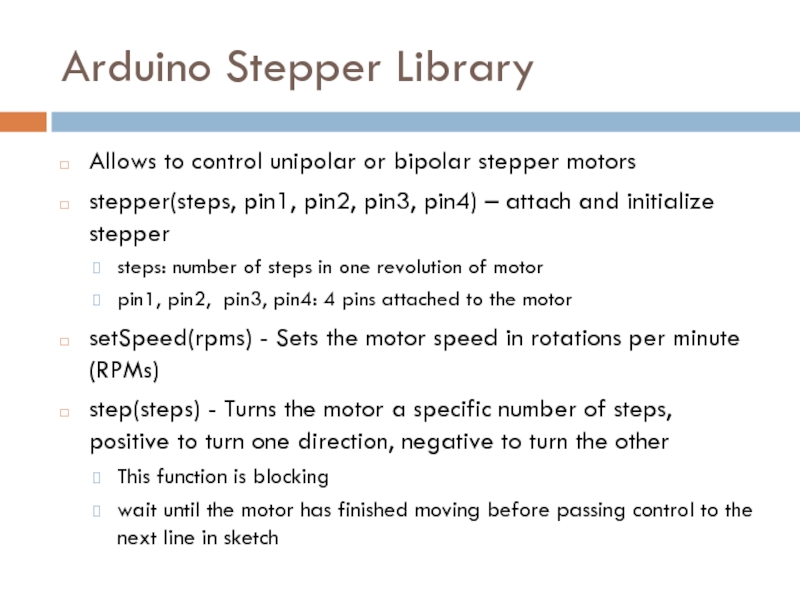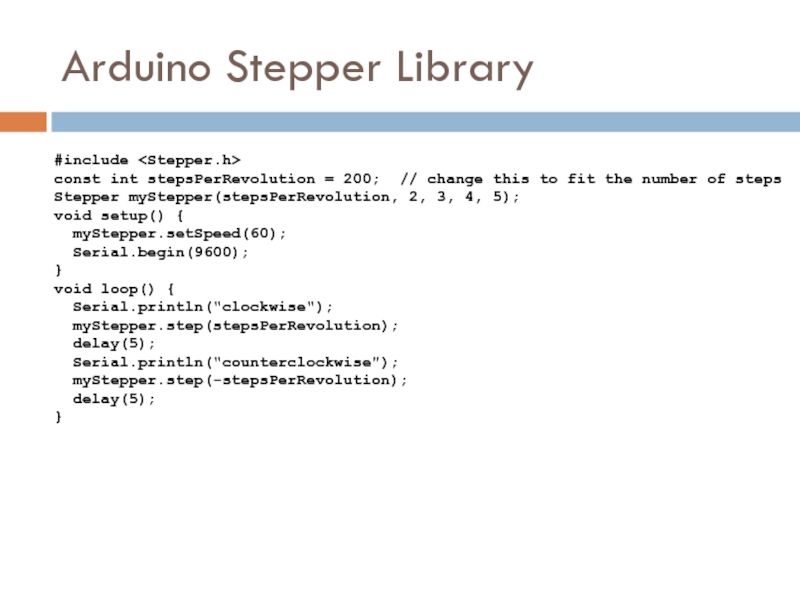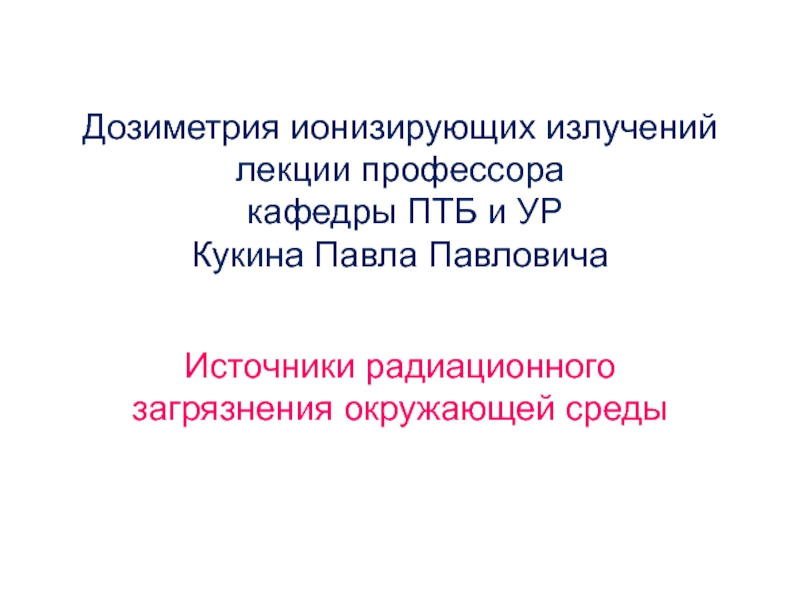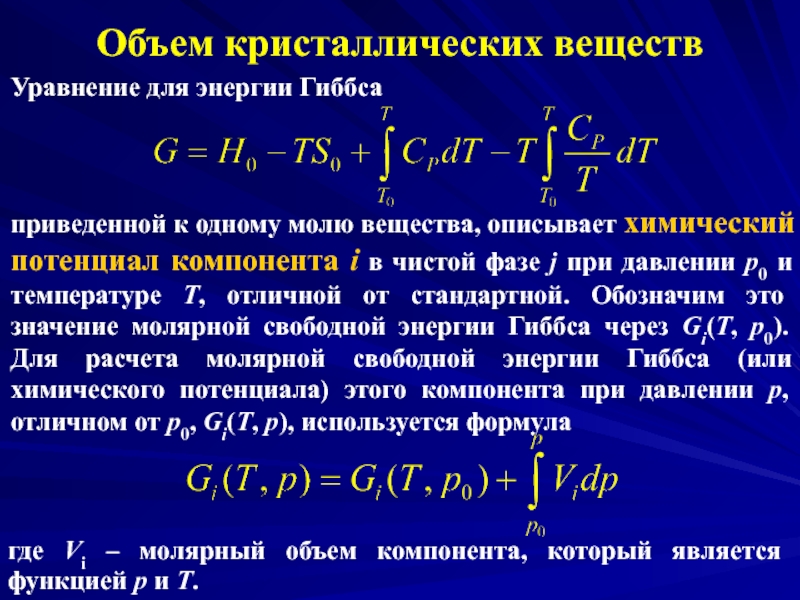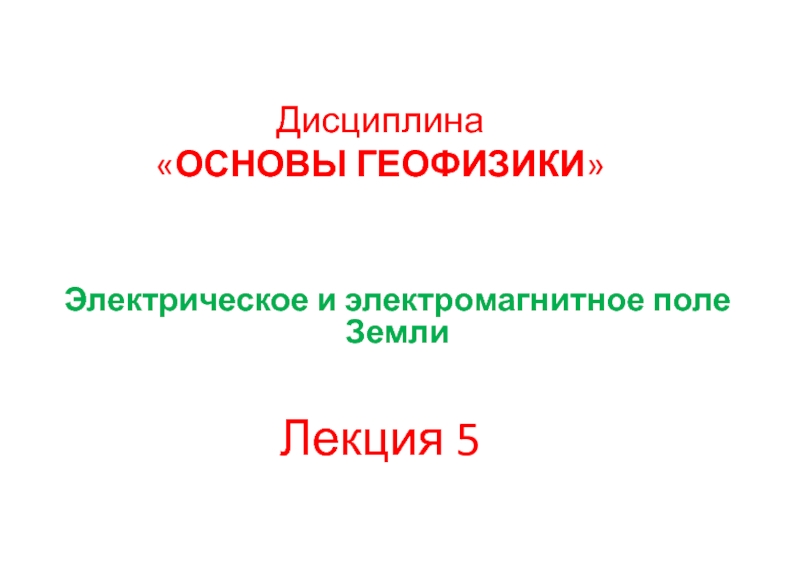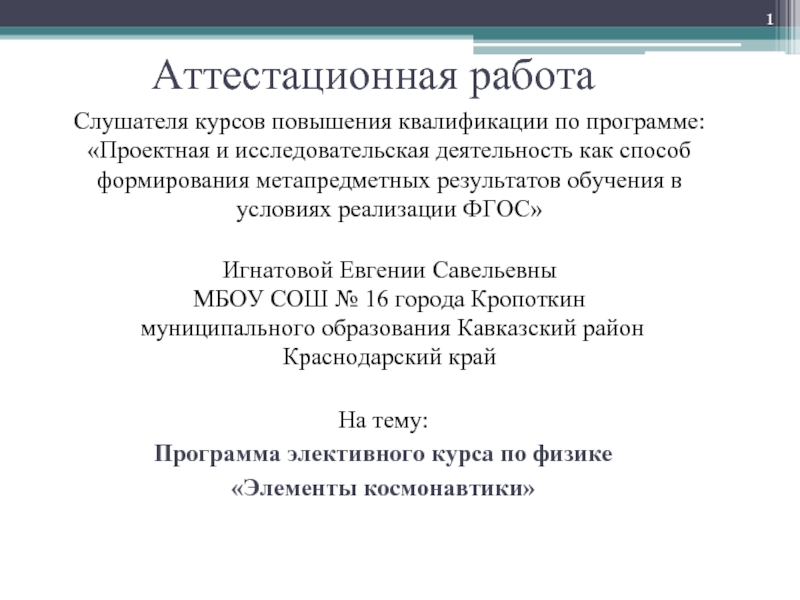- Главная
- Разное
- Дизайн
- Бизнес и предпринимательство
- Аналитика
- Образование
- Развлечения
- Красота и здоровье
- Финансы
- Государство
- Путешествия
- Спорт
- Недвижимость
- Армия
- Графика
- Культурология
- Еда и кулинария
- Лингвистика
- Английский язык
- Астрономия
- Алгебра
- Биология
- География
- Детские презентации
- Информатика
- История
- Литература
- Маркетинг
- Математика
- Медицина
- Менеджмент
- Музыка
- МХК
- Немецкий язык
- ОБЖ
- Обществознание
- Окружающий мир
- Педагогика
- Русский язык
- Технология
- Физика
- Философия
- Химия
- Шаблоны, картинки для презентаций
- Экология
- Экономика
- Юриспруденция
Physical Output презентация
Содержание
- 1. Physical Output
- 2. Physical Output Make things move by controlling
- 3. Brushed DC Motors Simple devices with two
- 4. Brushless Motors More powerful and efficient for
- 5. DC Motor Parameters Direct-drive vs. gearhead –
- 6. DC Motor Characteristics When the first start
- 7. Driving DC Motor To drive them, apply
- 8. Switching Motors with Transistors Transistors switch big
- 9. Driving a Brushed Motor const int motorPin
- 10. Controlling Speed of DC-Motor const int motorPin
- 11. Servo-Motors Allow accurately control physical movement Move
- 12. Servo-Motors
- 13. Servo-Motors Respond to changes in the duration
- 14. Servo-Motors Come in all sizes from super-tiny
- 15. Servo Control PWM freq is 50 Hz
- 16. Servo and Arduino const int servoPin =
- 17. Use the Servo library servo.attach(pin[, min][, max])
- 18. Servo sweeper #include Servo myservo; //
- 19. Controlling angle with pot #include Servo
- 20. Stepper Motors Rotate a specific number of
- 21. Stepper Motors Unipolar drivers always energize the
- 22. Stepper Motors All of the common coil
- 23. Driving a Unipolar Stepper Motor const int
- 24. Driving a Bipolar Stepper Motor const int
- 25. Arduino Stepper Library Allows to control unipolar
- 26. Arduino Stepper Library #include const int
Слайд 2Physical Output
Make things move by controlling motors with Arduino
Servo-motors
Rotary actuator that
DC-motors
Converts direct current electrical power into mechanical power
Stepper-motors
Divides a full rotation into a number of equal steps
Слайд 3Brushed DC Motors
Simple devices with two leads connected to brushes (contacts)
Control
Drives a metallic core (armature)
Direction of rotation can be reversed by reversing the polarity
Require a transistor to provide adequate current
Primary characteristic in selecting a motor is torque
How much work the motor can do
Слайд 4Brushless Motors
More powerful and efficient for a given size
Three phases of
Require more complicated electronic control
Electronics speed controllers
Слайд 5DC Motor Parameters
Direct-drive vs. gearhead – built-in gears or not
Voltage –
Current (efficiency) – how much current it needs to spin
Speed – how fast it spins
Torque – how strong it spins
Size, shaft diameter, shaft length
Слайд 6DC Motor Characteristics
When the first start up, they draw a lot
If you “stall” them (make it so they can’t turn), they also draw a lot of current
They can operate in either direction, by switching voltage polarity
Usually spin very fast: >1000 RPM
To get slower spinning, need gearing
Слайд 7Driving DC Motor
To drive them, apply a voltage
The higher the voltage,
Polarity determines which way it rotates
Can be used as voltage generators
Слайд 8Switching Motors with Transistors
Transistors switch big signals with little signals
Since motors
Need to prevent them from generating “kickback” into the circuit
Can control speed of motor with analogWrite()
Слайд 9Driving a Brushed Motor
const int motorPin = 3;
const int switchPin =
void setup() {
pinMode(switchPin, INPUT);
pinMode(motorPin, OUTPUT);
}
void loop() {
digitalWrite(motorPin, digitalRead(switchPin));
}
Слайд 10Controlling Speed of DC-Motor
const int motorPin = 3;
const int potPin =
void setup() {
}
void loop() {
int spd = analogRead(potPin);
spd = map(spd, 0, 1023, 0, 255);
analogWrite(motorPin, spd);
}
Слайд 11Servo-Motors
Allow accurately control physical movement
Move to a position instead of continuously
Rotate over a range of 0 to 180 degrees
Motor driver is built into the servo
Small motor connected through gears
Output shaft drives a servo arm
Connected to a potentiometer to provide position feedback
Continuous rotation servos
Positional feedback disconnected
Rotate continuously clockwise and counter clockwise with some control over the speed
Слайд 13Servo-Motors
Respond to changes in the duration of a pulse
Short pulse of
Pulse of 2 ms will rotate the servo to the other extreme
Servos require pulses different from the PWM output from analogWrite
Слайд 14Servo-Motors
Come in all sizes
from super-tiny
to drive-your-car
All have same 3-wire interface
Servos are
weight: 9g
speed: .12s/60deg @ 6V
torque: 22oz/1.5kg @ 6V
voltage: 4.6~6V
size: 21x11x28 mm
Слайд 15Servo Control
PWM freq is 50 Hz (i.e. every 20 millisecs)
Pulse width
In practice, pulse range can range from 500 to 2500 microsecs
Слайд 16Servo and Arduino
const int servoPin = 7;
const int potPin = A0;
const
void setup() {
pinMode(servoPin, OUTPUT);
}
void loop() {
int hiTime = map(analogRead(potPin), 0, 1023, 600, 2500);
int loTime = pulsePeriod - hiTime;
digitalWrite(servoPin, HIGH); delayMicroseconds(hiTime);
digitalWrite(servoPin, LOW); delayMicroseconds(loTime);
}
Слайд 17Use the Servo library
servo.attach(pin[, min][, max]) – attach the servo
pin- the
min (optional) - the pulse width, in microseconds, corresponding to the minimum (0-degree) angle on the servo (defaults to 544)
max (optional) - the pulse width, in microseconds, corresponding to the maximum (180-degree) angle on the servo (defaults to 2,400)
servo.write(angle) – turn the servo arm
angle – the degree value to write to the servo (from 0 to 180)
Слайд 18Servo sweeper
#include
Servo myservo; // create servo object to control a
int angle = 0; // variable to store the servo position
void setup(){
myservo.attach(9); // attaches the servo on pin 9 to the servo object
}
void loop(){
for(angle = 0; angle < 180; angle += 1){ // goes from 0 degrees to 180
myservo.write(angle); //tell servo to go to position in variable 'angle'
delay(20); // waits 20ms between servo commands
}
for(angle = 180; angle >= 1; angle -= 1){ // goes from 180 degrees to 0
myservo.write(angle);
delay(20);
}
}
Слайд 19Controlling angle with pot
#include
Servo myservo; // create servo object to
int potpin = 0; // analog pin used to connect the potentiometer
int val; // variable to read the value from the analog pin
void setup(){
myservo.attach(9); // attaches the servo on pin 9 to the servo object
}
void loop(){
val = analogRead(potpin); // reads the value of the potentiometer
val = map(val, 0, 1023, 0, 180); // scale it to use it with the servo
myservo.write(val); // sets position
delay(15);
}
Слайд 20Stepper Motors
Rotate a specific number of degrees in response to control
Number of degrees for a step is motor-dependent
Ranging from one or two degrees per step to 30 degrees or more
Two types of steppers
Bipolar - typically with four leads attached to two coils
Unipolar - five or six leads attached to two coils
Additional wires in a unipolar stepper are internally connected to the center of the coils
Слайд 21Stepper Motors
Unipolar drivers always energize the phases in the same way
Single
The other lead will always be positive
Disadvantage - less available torque, because only half of the coils can be energized at a time
Bipolar drivers work by alternating the polarity to phases
All the coils can be put to work
Слайд 22Stepper Motors
All of the common coil wires are tied together internally
This motor only joins the common wires of 2 paired phases. These two wires can be joined to create a 5-wire unipolar motor. Or you just can ignore them and treat it like a bipolar motor!
It can be driven in several ways:
4-phase unipolar - All the common wires are connected together - just like a 5-wire motor.
2-phase series bipolar - The phases are connected in series - just like a 6-wire motor.
2-phase parallel bipolar - The phases are connected in parallel. This results in half the resistance and inductance - but requires twice the current to drive. The advantage of this wiring is higher torque and top speed.
Слайд 23Driving a Unipolar Stepper Motor
const int stepperPins[4] = {2, 3, 4,
int delayTime = 5;
void setup() {
for(int i=0; i<4; i++)
pinMode(stepperPins[i], OUTPUT);
}
void loop() {
digitalWrite(stepperPins[0], HIGH);
digitalWrite(stepperPins[1], LOW);
digitalWrite(stepperPins[2], LOW);
digitalWrite(stepperPins[3], LOW);
delay(delayTime);
digitalWrite(stepperPins[0], LOW);
digitalWrite(stepperPins[1], HIGH);
digitalWrite(stepperPins[2], LOW);
digitalWrite(stepperPins[3], LOW);
delay(delayTime);
digitalWrite(stepperPins[0], LOW);
digitalWrite(stepperPins[1], LOW);
digitalWrite(stepperPins[2], HIGH);
digitalWrite(stepperPins[3], LOW);
delay(delayTime);
digitalWrite(stepperPins[0], LOW);
digitalWrite(stepperPins[1], LOW);
digitalWrite(stepperPins[2], LOW);
digitalWrite(stepperPins[3], HIGH);
delay(delayTime);
}
Слайд 24Driving a Bipolar Stepper Motor
const int stepperPins[4] = {2, 3, 4,
int delayTime = 5;
void setup() {
for(int i=0; i<4; i++)
pinMode(stepperPins[i], OUTPUT);
}
void loop() {
digitalWrite(stepperPins[0], LOW);
digitalWrite(stepperPins[1], HIGH);
digitalWrite(stepperPins[2], HIGH);
digitalWrite(stepperPins[3], LOW);
delay(delayTime);
digitalWrite(stepperPins[0], LOW);
digitalWrite(stepperPins[1], HIGH);
digitalWrite(stepperPins[2], LOW);
digitalWrite(stepperPins[3], HIGH);
delay(delayTime);
digitalWrite(stepperPins[0], HIGH);
digitalWrite(stepperPins[1], LOW);
digitalWrite(stepperPins[2], LOW);
digitalWrite(stepperPins[3], HIGH);
delay(delayTime);
digitalWrite(stepperPins[0], HIGH);
digitalWrite(stepperPins[1], LOW);
digitalWrite(stepperPins[2], HIGH);
digitalWrite(stepperPins[3], LOW);
delay(delayTime);
}
Слайд 25Arduino Stepper Library
Allows to control unipolar or bipolar stepper motors
stepper(steps, pin1,
steps: number of steps in one revolution of motor
pin1, pin2, pin3, pin4: 4 pins attached to the motor
setSpeed(rpms) - Sets the motor speed in rotations per minute (RPMs)
step(steps) - Turns the motor a specific number of steps, positive to turn one direction, negative to turn the other
This function is blocking
wait until the motor has finished moving before passing control to the next line in sketch
Слайд 26Arduino Stepper Library
#include
const int stepsPerRevolution = 200; // change this
Stepper myStepper(stepsPerRevolution, 2, 3, 4, 5);
void setup() {
myStepper.setSpeed(60);
Serial.begin(9600);
}
void loop() {
Serial.println("clockwise");
myStepper.step(stepsPerRevolution);
delay(5);
Serial.println("counterclockwise");
myStepper.step(-stepsPerRevolution);
delay(5);
}
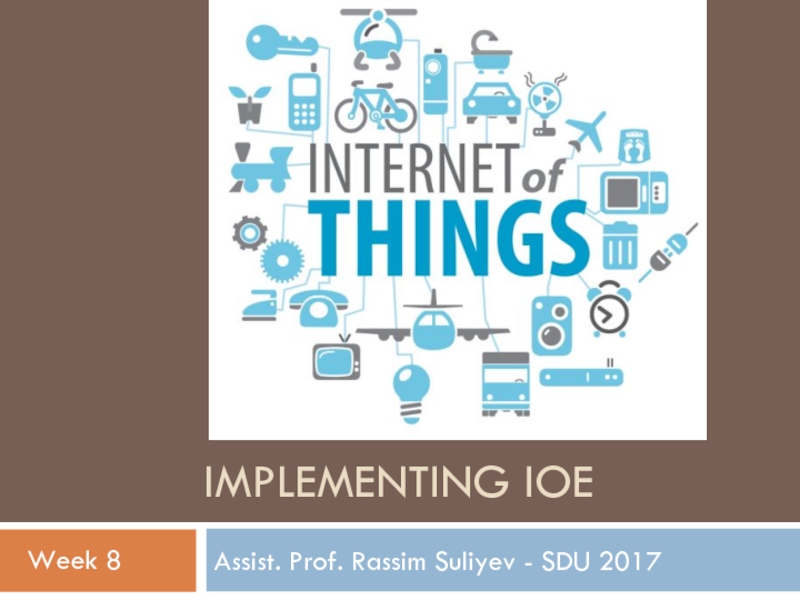
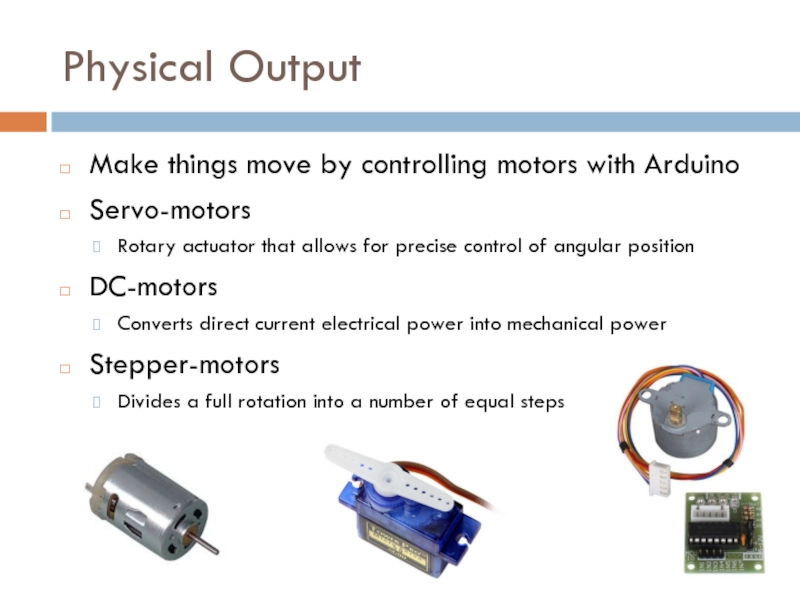
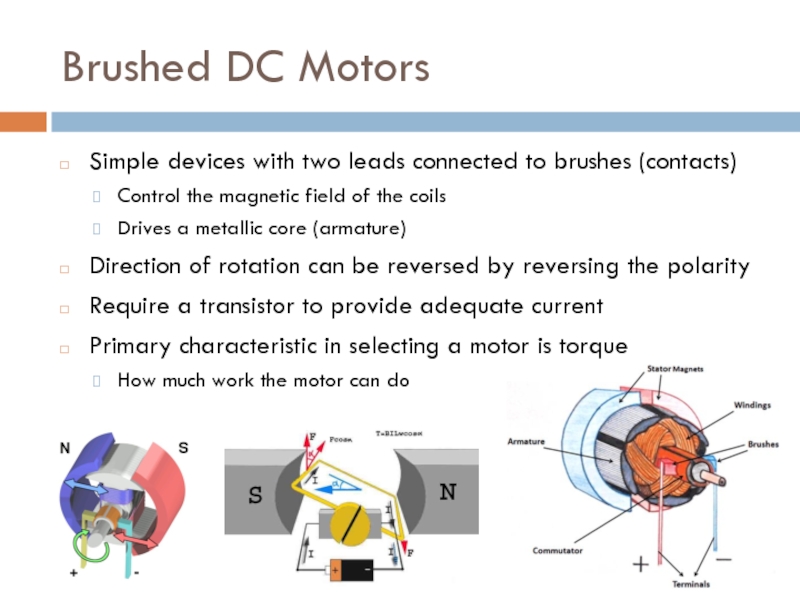
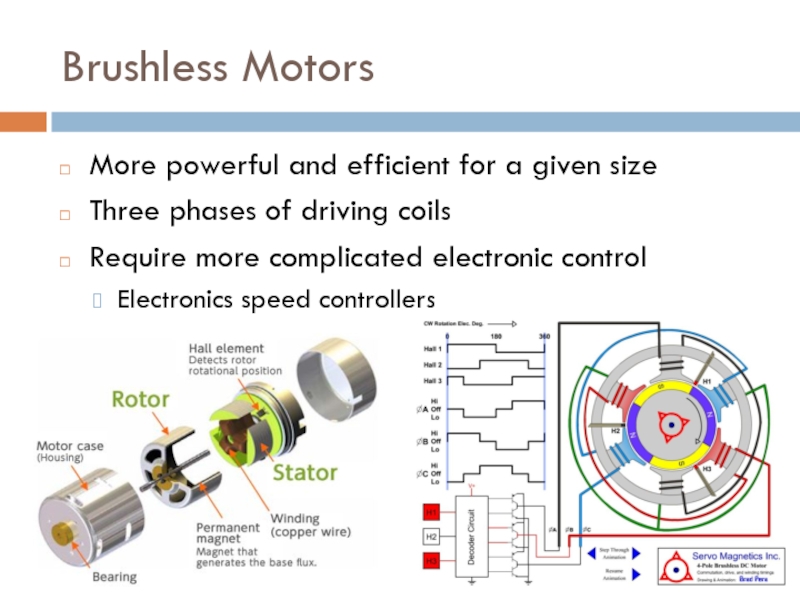
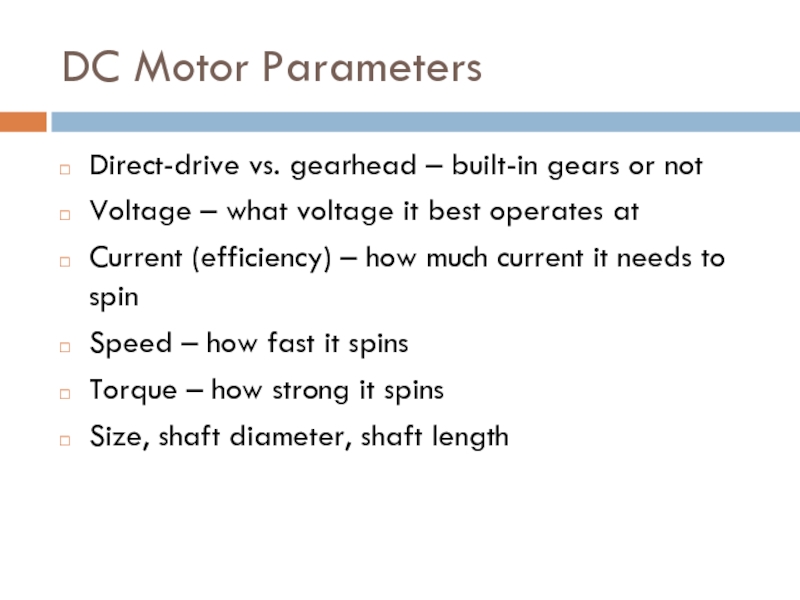
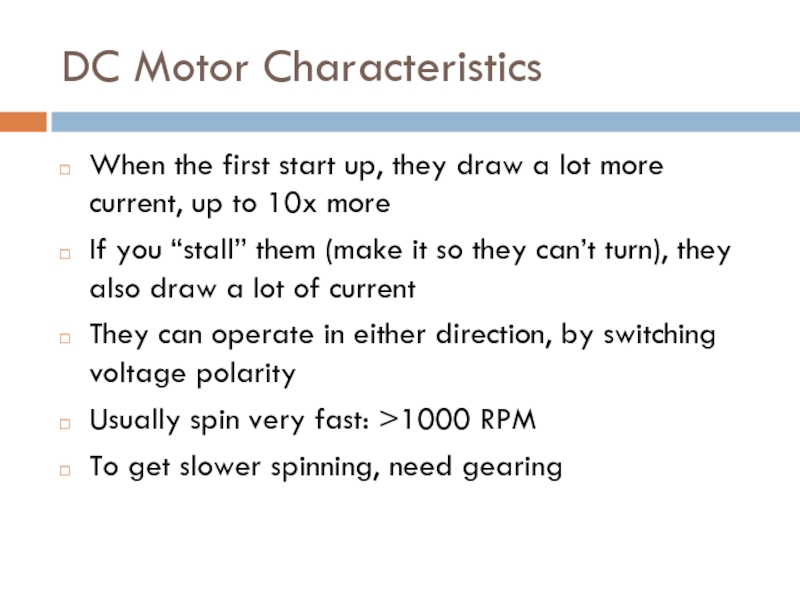
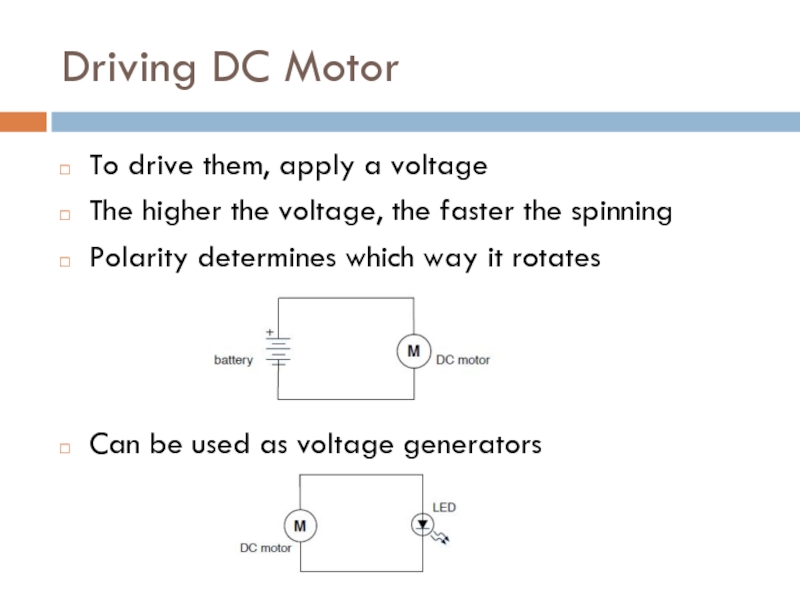
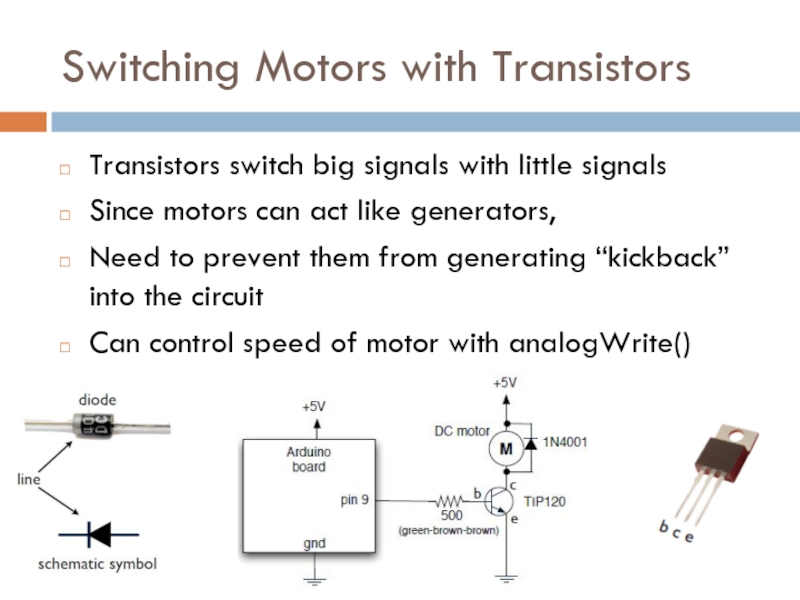
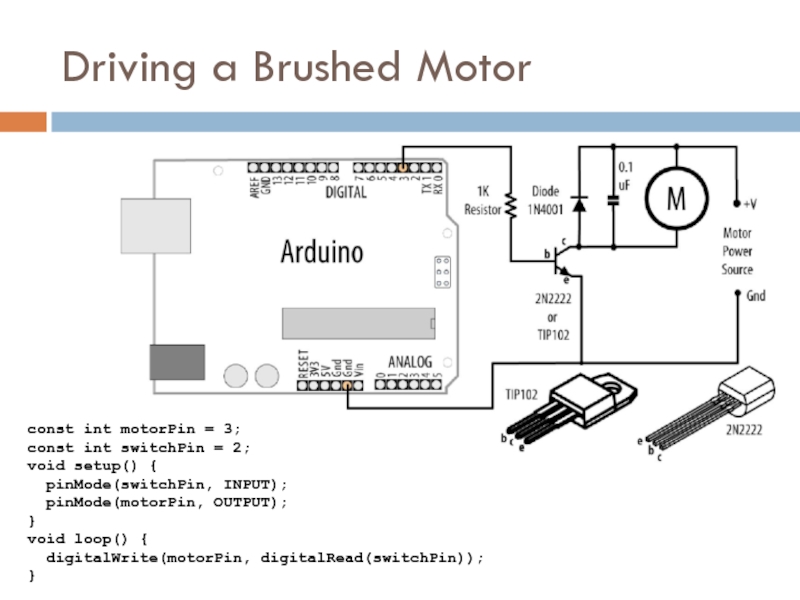
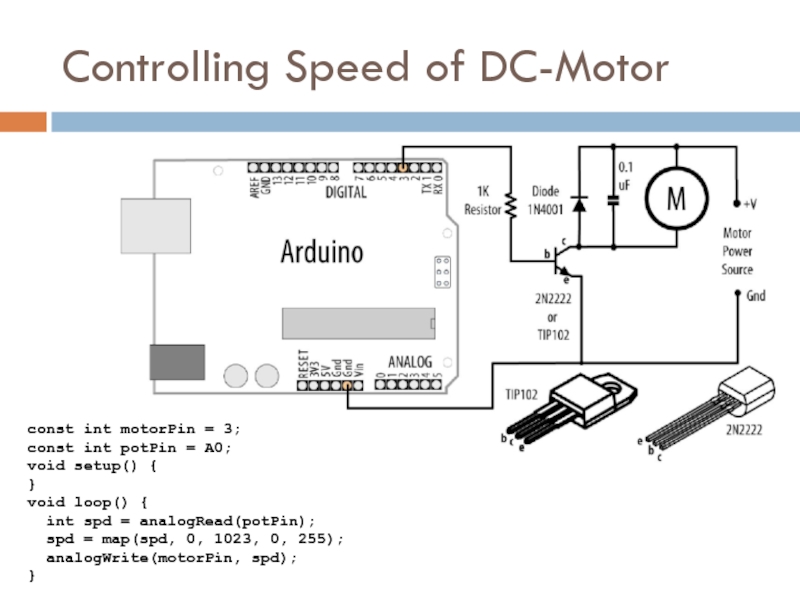
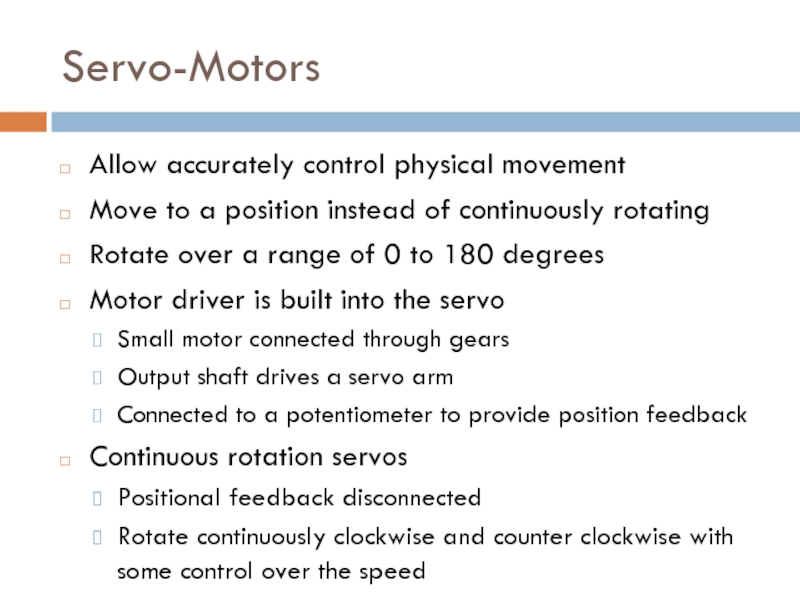
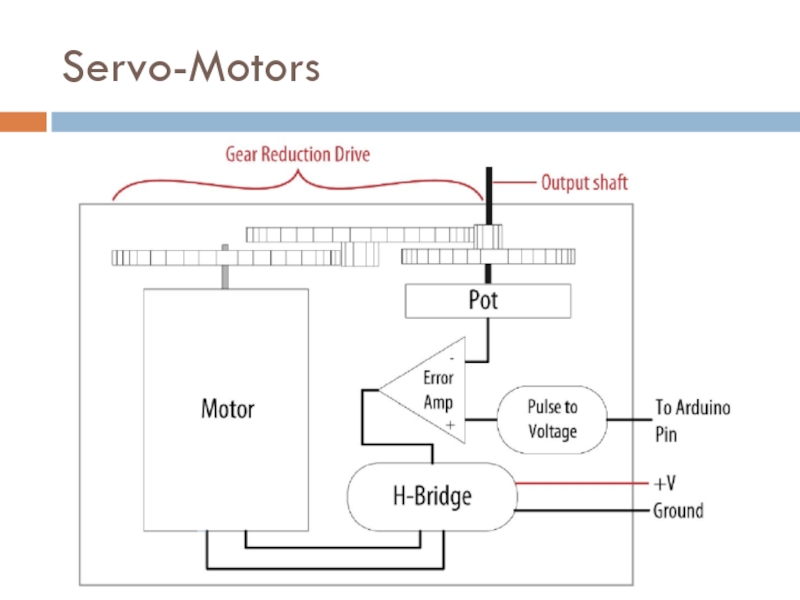
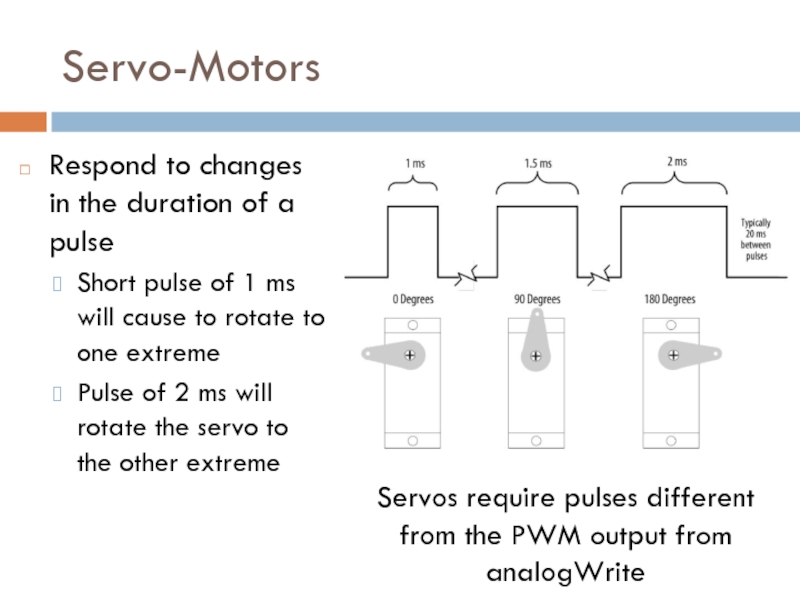
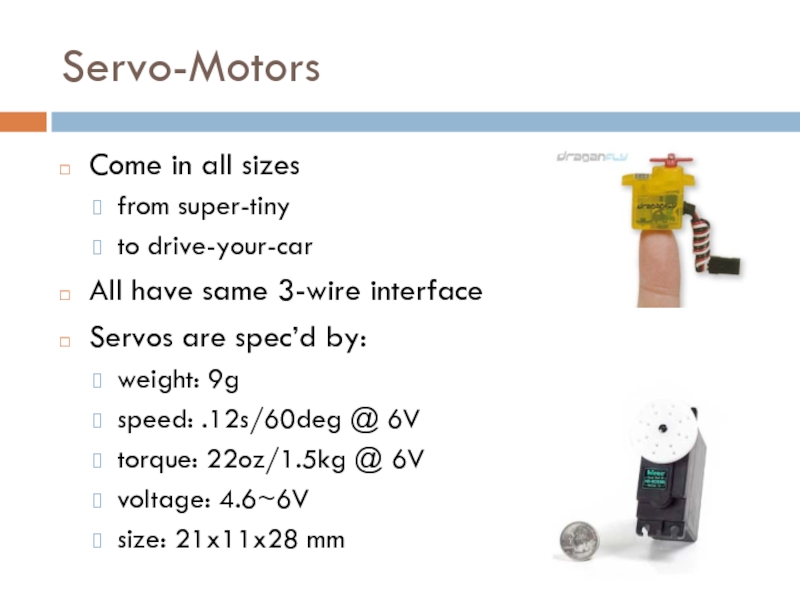
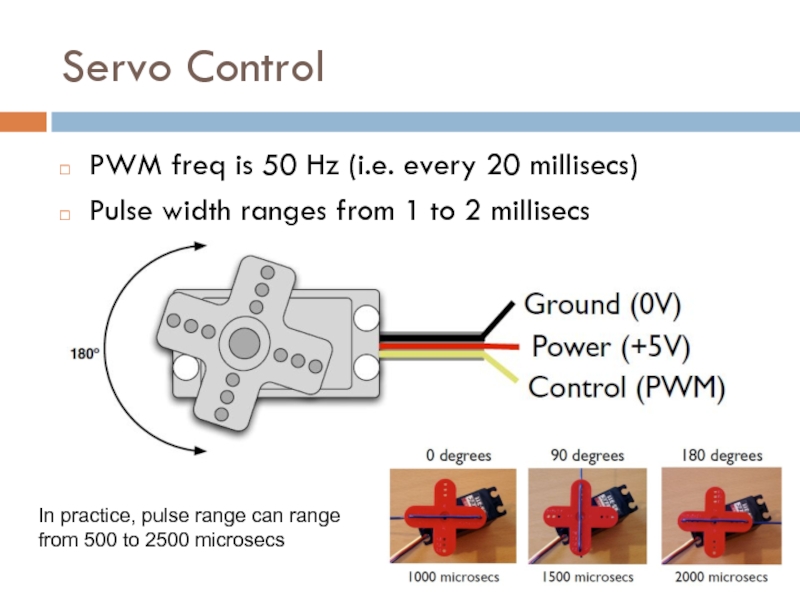
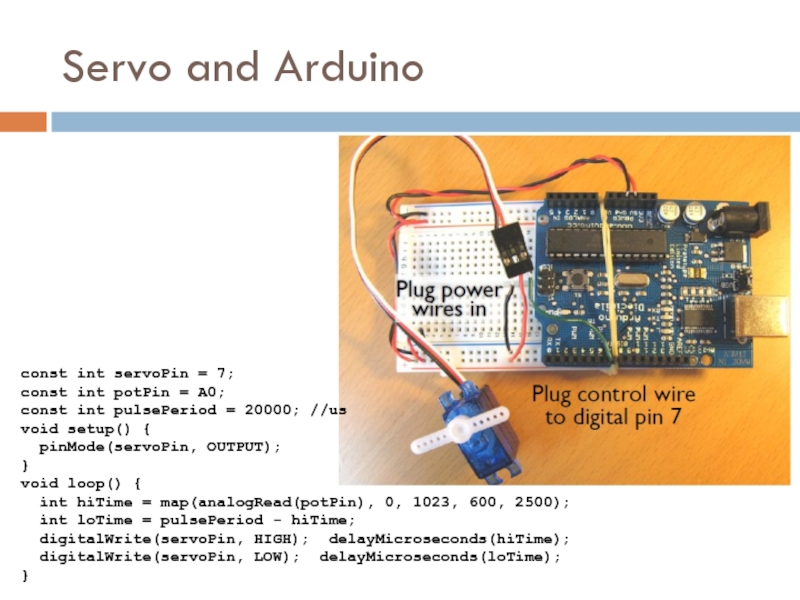
![Use the Servo libraryservo.attach(pin[, min][, max]) – attach the servopin- the pin number that the](/img/tmb/6/504589/55b8206a160f39879e1eed12f8961187-800x.jpg)
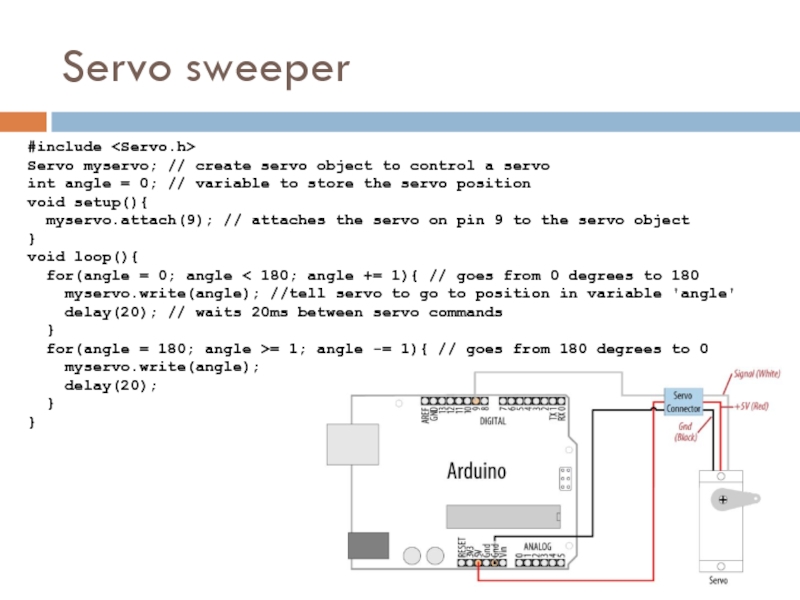
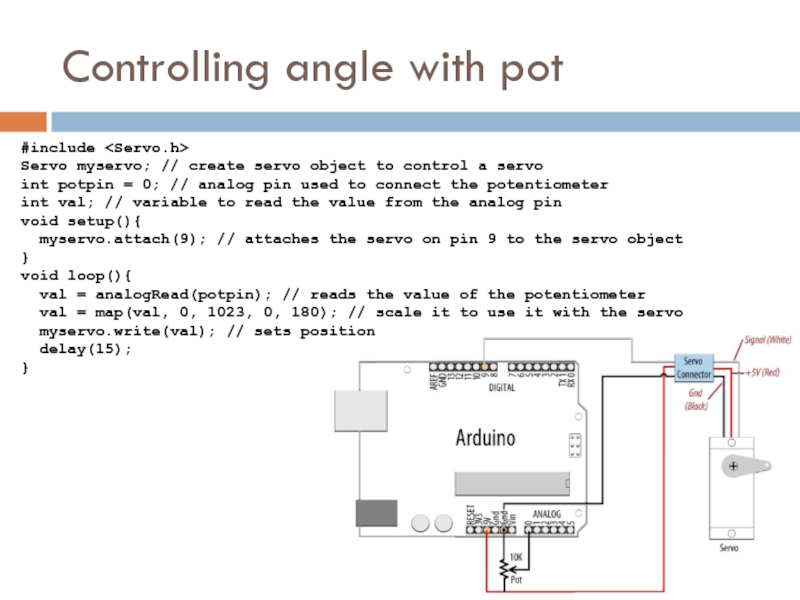
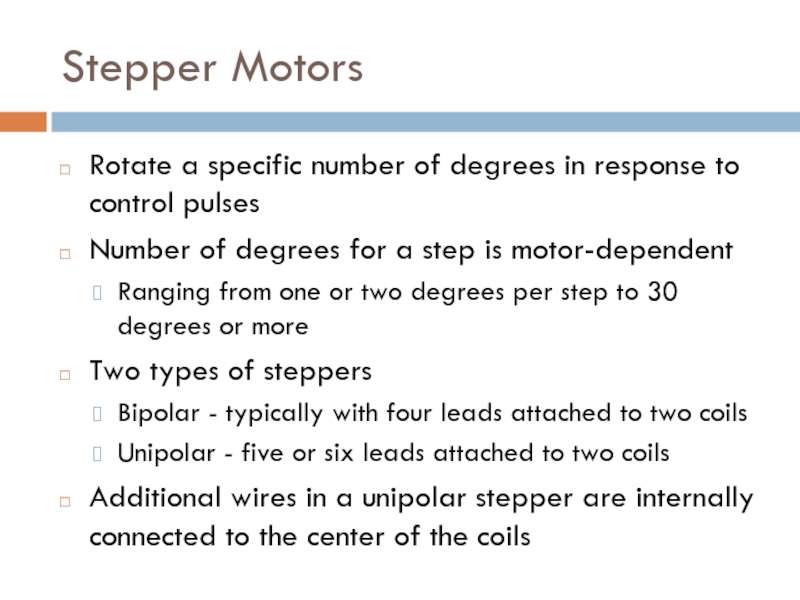
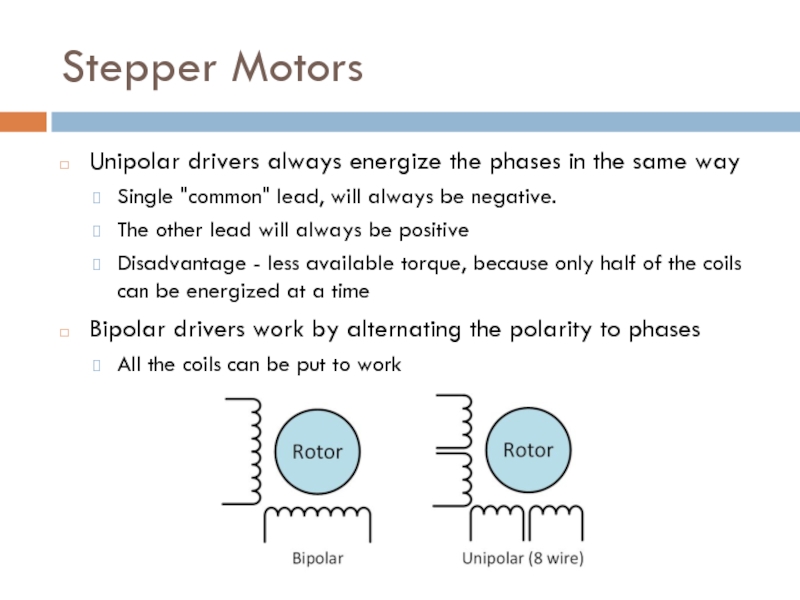
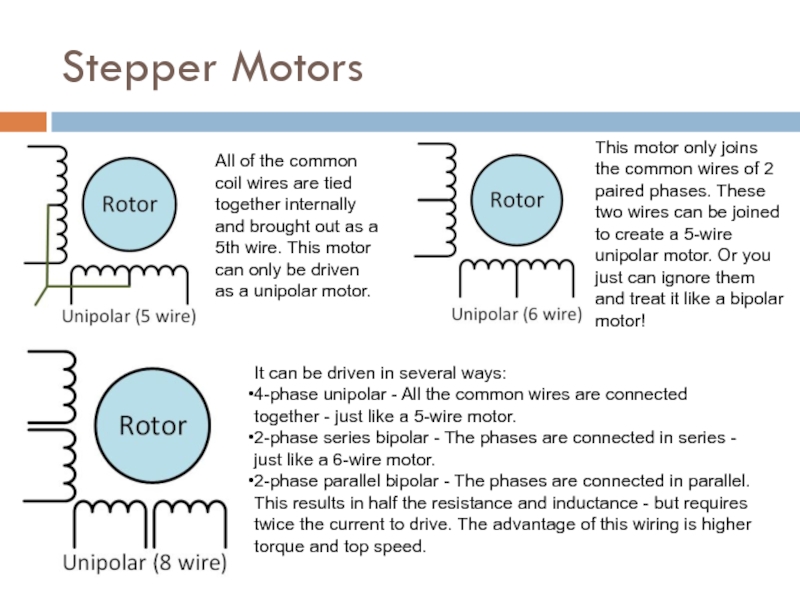
![Driving a Unipolar Stepper Motorconst int stepperPins[4] = {2, 3, 4, 5};int delayTime = 5;void](/img/tmb/6/504589/d1bf1776ee588389b490f0659d245536-800x.jpg)
![Driving a Bipolar Stepper Motorconst int stepperPins[4] = {2, 3, 4, 5};int delayTime = 5;void](/img/tmb/6/504589/6a72fec1b3aa94c41bebf2ea0a1f3ce9-800x.jpg)
